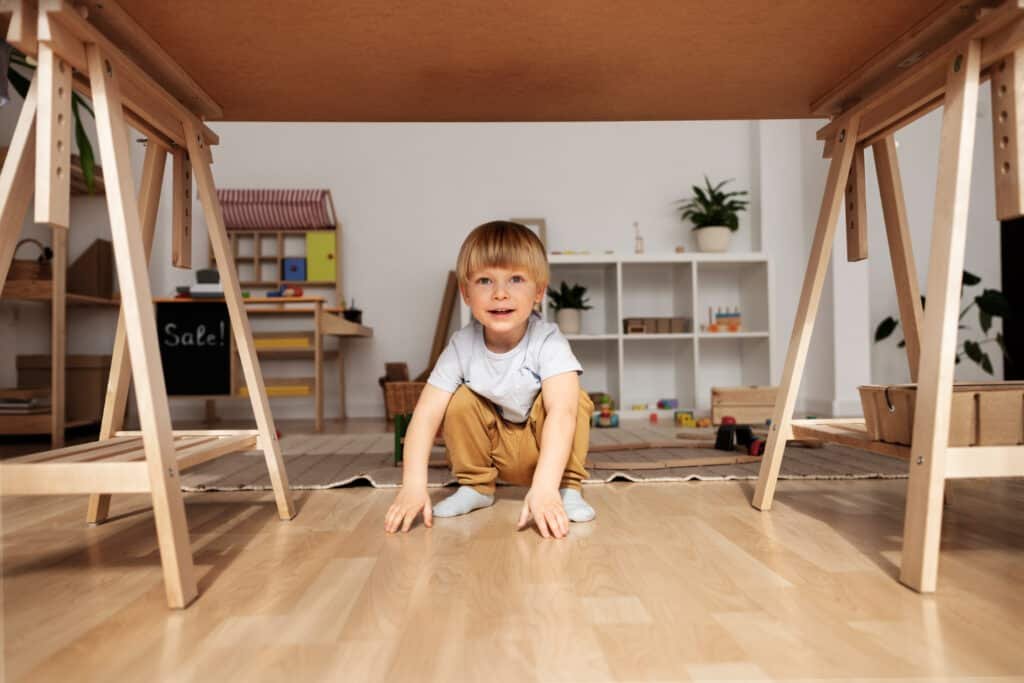Transforming your basement into a playroom is an excellent way to create a dedicated space for kids to play and learn. Not only does it keep the clutter away from your main living areas, but it also provides a safe and creative environment for children. Here’s how you can turn your basement into a magical, fun-filled playroom.
Planning and Designing the Space
Start by assessing the potential of your basement and envisioning how it can be transformed into a child-friendly zone.
Measure and Sketch: Begin with precise measurements and a basic layout.
Select a Theme: Choose an engaging theme like adventure, fantasy, or animals.
Zoning for Different Activities: Designate areas for various activities – reading, playing, and crafting.
Color Scheme: Opt for vibrant and stimulating colors.
Adaptable Design: Ensure the space can evolve with your child’s growth.
A well-planned design lays the foundation for a functional and enjoyable playroom.
Safety First
Prioritize the safety of the playroom to ensure a secure environment for children.
Childproofing Basics: Secure furniture and cover all electrical outlets.
Safe Flooring: Opt for non-slip, cushioned flooring.
Air Quality and Ventilation: Ensure good air circulation and consider air purifiers.
Effective Lighting: Bright, child-safe lighting is essential.
Emergency Preparedness: Keep a first aid kit and emergency instructions accessible.
A safe playroom gives peace of mind and allows children to explore freely.
Creative Play Areas
Foster creativity and imagination by incorporating versatile play areas in your design.
Interactive Walls: Utilize chalkboard or magnetic paint for a creative wall space.
Dress-up Corner: Include a variety of costumes and props.
Building and Construction Zone: Provide an area for blocks and construction toys.
Floor Games: Incorporate interactive floor mats with games.
Music and Movement Area: Set up a small space for dance and music.
Creative play areas encourage imagination and physical activity.

Educational and Quiet Zones
Balance the playroom with areas dedicated to quiet time and learning.
Reading Nook: Create a comfortable reading area with a variety of books.
Arts and Crafts Station: Equip with diverse art supplies and a display area.
Educational Technology: Include a tech corner with parental controls for learning apps.
Puzzles and Board Games: Offer a range of games for different age groups.
Science and Nature Exploration: Set aside space for educational science and nature activities.
Quiet and educational zones are crucial for cognitive development and relaxation.
Storage and Organization
Efficient storage solutions are key to maintaining a tidy and organized playroom.
Label Everything: Use clear labels for bins and shelves.
Multipurpose Storage Furniture: Opt for storage that serves dual purposes.
Regular Clean-up Routines: Implement a system for decluttering.
Child-Friendly Access: Ensure storage is within easy reach for kids.
Art Display Area: Designate a space for showcasing children’s artwork.
Good organization simplifies maintenance and enhances the functionality of the playroom.
Transforming your basement into a playroom is a project that can bring immense joy and value to your home. By carefully planning, ensuring safety, fostering creativity, balancing educational elements, and organizing the space efficiently, you create not just a play area, but a haven of learning and growth for your children.


